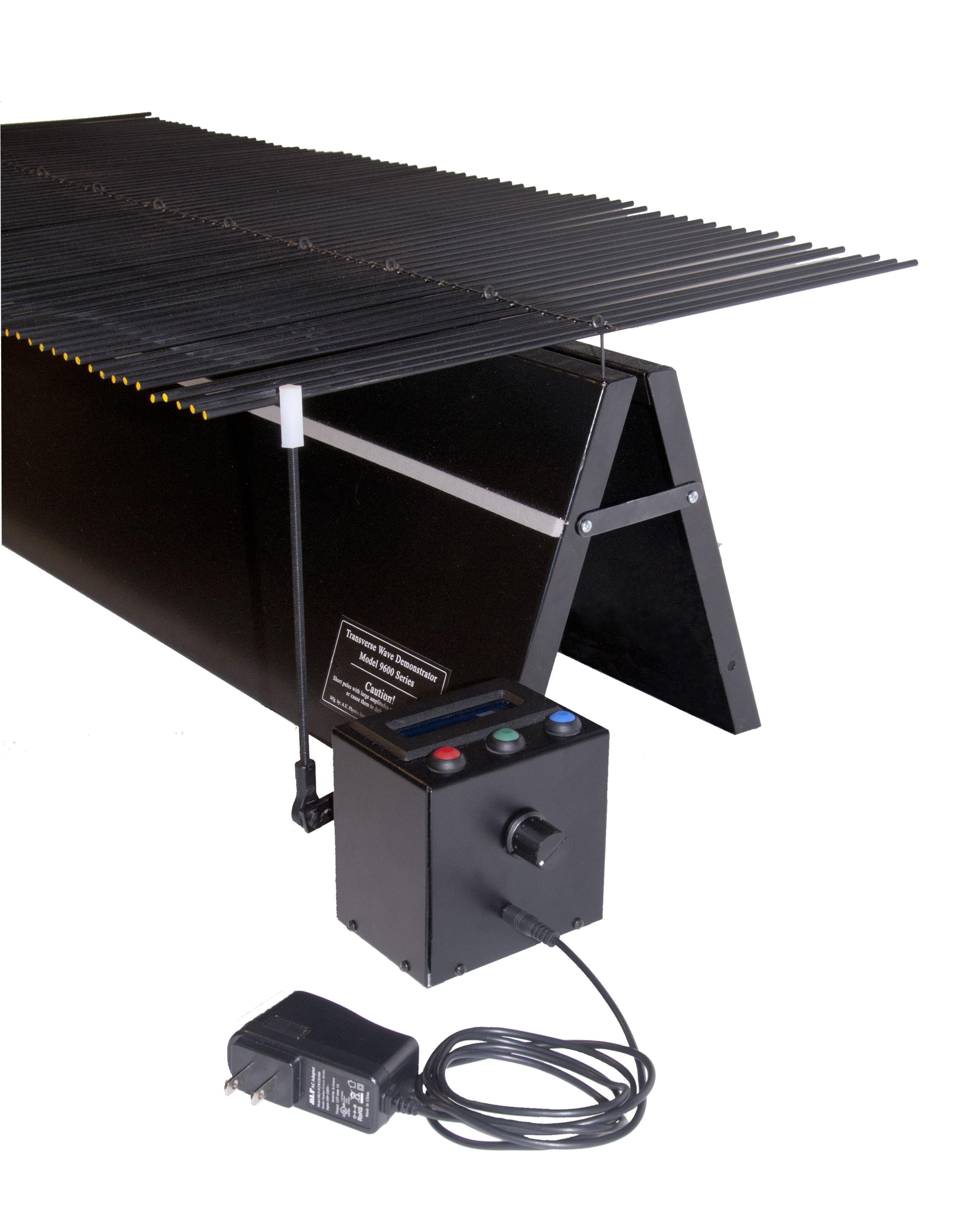Wave Motion Demonstrator Actuator

Product Description
The Actuator pictured above compliments the Wave Motion Demonstrator by generating either a reproducible pulse waveform or a periodic sinusoidal waveform at a controlled frequency. This Actuator is designed to facilitate the operation of the Wave Demonstrator and to promote quantitative applications. The pulse waveform is a half sinusoidal wave with a half period of about 0.15s. The frequency of the periodic sinusoidal waveform is continuously variable from 0.1Hz to 3Hz and its value is displayed along with the corresponding period. The Actuator arm is magnetically coupled to the rod of the Wave Demonstrator.
The Actuator makes the following phenomena easy to demonstrate:
- Theoretical laws of wave propagation including the propagation velocity
- Reflections from terminations (boundary conditions) and wave interference (superposition)
- Standing waves and resonant frequencies with open or clamped terminations
Propagation Velocity
The User’s Manual for the Wave Demonstrator has the specifications needed to calculate the expected velocity of wave propagation. Using the Actuator to produce a pulse, the propagation velocity may be measured by counting the bars (½ inch/bar) between pulses with a known separation in time. Or the Actuator can be used to
produce a periodic waveform and the measured length of the period in bars may be multiplied by the displayed frequency to determine the velocity (v = f*λ).
Note: The bars can easily be counted on a snapshot of the excited Wave Demonstrator.
Superposition of Waves
A pulse generated by the Actuator will be reflected from an open-line termination with the same polarity or from a clampedline termination with a reversal of polarity. The Actuator can then be used to produce a second pulse to meet the returning pulse from an open or clamped line to demonstrate constructive or destructive interference and the property of wave superposition.
Standing Waves
From the length of the line and the velocity of propagation, the frequencies expected to generate resonant standing waves can be determined. Then the Actuator can excite the Wave Demonstrator at the calculated frequency to demonstrate that a resonant standing wave is generated. Or the periodic frequency can be varied looking for the frequencies that cause resonant standing waves, and then those experimentally determined frequencies can be compared to theory.
Note: The end of the Wave Demonstrator connected to the Actuator is assumed to be a clamped termination.
Features
Includes
- Actuator
- Manual
Downloads
In case of further questions, please, contact us.

